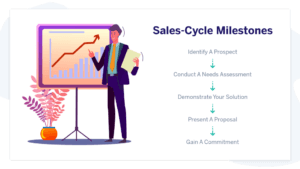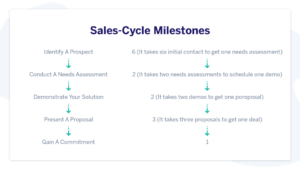I keep hearing that making sales today is more difficult than in the past. But I have to tell you, I’ve heard that same excuse for 30 years. One of the first questions I ask salespeople at the beginning of any training session is: “Would you say that selling is more challenging today than in the past?” I asked the same question in 1990, and I got the same unanimous response I get today. In every case, 100% of salespeople agree that selling is now more challenging.
I follow that question with another one: “Why do you think making sales is more difficult today?” In the past, the biggest reason was: “It’s harder to differentiate our product from the competition.” Today I’m more likely to hear: “The internet creates more-educated buyers. When we first meet them, their further along in their decision cycle than ever before.”
Well, it’s hard to argue with the fact that the internet exists. But you know what? The internet provides sellers with as much valuable information as it does the buyers. Competitive intel and prospect information gathered from websites and social media are good examples.
I believe that today’s concern about the internet actually translates to the same issue as in the past: It’s harder to differentiate our product and services because the customer knows more about the competition’s products and services – which are a whole lot like ours.
There really is a solution to this problem. Before I identify it, however, we need to look at where sales slumps originate and why they happen in the first place.
Unless you live in a world with a “one-call close,” your company has something commonly called a sales cycle. Your sales cycle is composed of the series of steps or milestones that must be completed to take your customer from the initial call to a solid commitment to buy your solution. Here’s a sample of what it might look like:

Your own sales cycle may have more milestones or fewer, but they exist, and you can identify them. To fix a sales slump, the important thing to determine is at what point in your sales cycle things begin to break down. For example, it doesn’t make sense to invest in a redesign of your proposal system if your team isn’t making enough prospecting calls to build a reasonable pipeline.
How do you know where the bottleneck is? Start by asking your reps. At what point in the sales cycle do they see things breaking down or getting stalled? You may get some valuable insight.
However, the reps might not completely recognize where the real problem lies. Therefore, you also should look at the history of your team’s activity data. Your customer relationship management system (CRM), if you have one, would be the logical source of this data.
I suggest backing into the numbers by starting at the last milestone in your sales cycle and back-tracking sequentially. Using the sample milestone above, for example: on average, how many proposals does it take to get a deal? How many needs assessments does it take to get a demo? How many prospecting calls does it take to get a needs assessment? Let’s assume the answers look like this:

Now do the math:
To get one deal, you need (6 x 2 x 2 x 3) 72 prospecting calls, (2 x 2 x 3) 12 needs assessments, (2 x 3) 6 demos, and 3 proposals.
Let’s say that each rep needs to do a deal per month to hit quota. Is each rep making 72 new prospect calls every month? Is everyone conducting 12 assessments, facilitating six demos, and presenting 3 proposals?
If not, what is the earliest point in the sales cycle where quantities miss the mark? Even if more than one milestone is below standard, the earliest milestone below par is the place to start making improvements. That’s where you will find the greatest insight into the origin of your sales slump.
Want to learn more about coaching and training your way out of a slump? Click here and one of our Business Development Managers will reach out to you!

